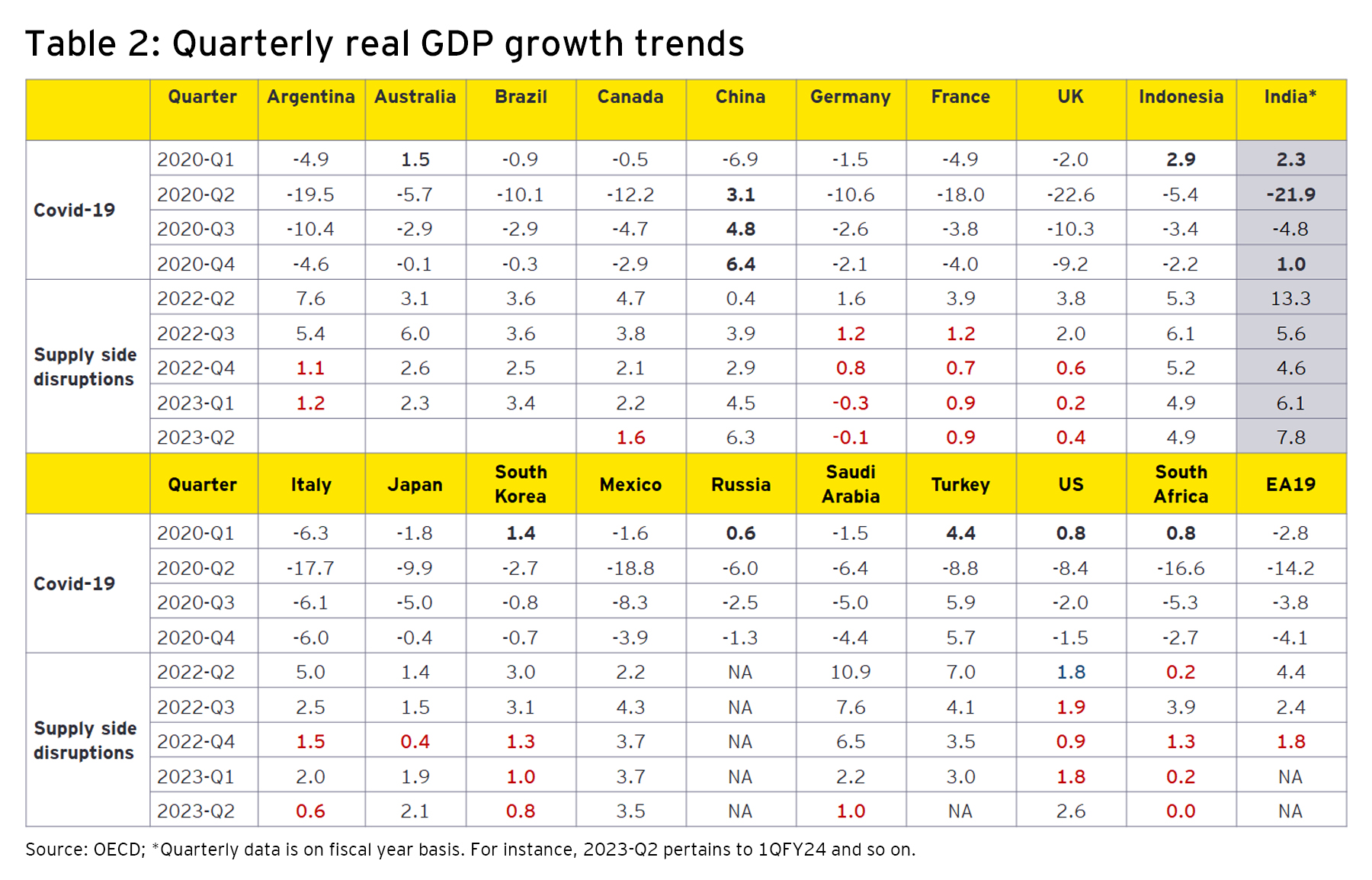India’s growth prospects are bright, with its potential role in developing infrastructure, manufacturing, and services in expanded G-20.
In brief
- The expanded G-20, including the African Union, represents nearly 90% of global GDP and close to 80% of the world’s population.
- While many G-20 countries face slowdown and high inflation, India’s economic growth prospects appear bright with better inflation management, and lower government debt.
- As per the IMF, India is poised to lead global growth, contributing 15% to it in 2023.
Key features of expanded G-20 group: share in GDP and population
The expanded G-20 group of countries with the addition of the African Union (AU) constitutes a large complex group of countries and country groups that accounted for 88.6% of global GDP in 2022 (Table 1) and 79.1% of global population in 2023.
In terms of the size and age structure of population, the profiles of individual member countries of the expanded G-20 group provides for considerable diversity. India, China and the AU together account for 53.6% of the global population (2023). Ten countries have a share of 1% or less in the pre-expanded G-20 group. The age profile of the member countries also shows considerable variation. The oldest country is Japan with a median age of 49.1 years whereas Nigeria has the lowest median age at 17.2 years (considering only major economies within the AU group). India is uniquely positioned both in terms of share in global population and median age, accounting for 17.8% of the global population in 2023. Its median age is 28.2 years, well below that of China at 39 years.
Expanded G-20 countries: co-existence of economic slowdown and inflation
Globally, growth has been challenged by two recent phenomena namely, COVID-19 and economic slowdown linked to the ongoing geopolitical developments. Table 2 shows that four quarters from 2020-Q1 to 2020-Q4 were mainly affected by COVID-19, with most economies experiencing a contraction in their GDP. Within six to seven quarters post-COVID impact, the adverse effect of the ongoing geopolitical conflict became visible, characterized by barriers to trade and financial flows, leading to an economic slowdown, and in the case of Germany, an economic recession. Despite the widespread slowdown, India, Indonesia and to some extent, Mexico appears to be exceptions.

Backed by our deep technical knowledge, global scale, and leading EY Trade Connect technology platform, EY offers a flexible way to view trade operations with clarity and act with precision, while managing costs and mitigating risks.Read more
Along with growth slowdown, the G-20 countries are also experiencing high CPI inflation. It was exceptionally high in Argentina and Turkey in 2022 and is expected to remain elevated in 2023 as well. Some G-20 countries who had maintained low inflation trajectories over a long time period until 2022 are also experiencing significantly high inflation (UK, the EU, Australia, Brazil, and the US). Broadly, inflation in 2023 is projected to be lower than that in 2022. Inflation experienced by some of the larger AU countries was also quite high. Countries facing high inflation rates find it difficult to monetarily stimulate their economies.
Unprecedented high debt levels
The government debt-GDP ratio of the expanded G-20 group is estimated at 97.4% at end-2022. It is projected to increase to 106.4% by end-2028. In Japan and the US, government debt-GDP ratios were at inordinately high levels of 261.3% and 121.7% respectively at the end of 2022. The IMF projects these to increase to 264.0% and 136.2% by 2028. Some of the other developed G-20 countries which had higher than 100% government debt to GDP ratios at end-2022 include Canada, UK, Italy, and France. In comparison, India has a lower government debt-GDP ratio of 83.1%. This provides additional fiscal space for policy intervention and scope for higher investment opportunities in India.
India’s economic opportunities in the expanded G-20
India’s economic growth prospects appear bright with relatively better inflation management, and a lower government debt-GDP ratio. It is slated to lead global growth, maintaining a 6% plus growth rate in the short to medium term. India may be able to improve its growth performance even more as soon as the global economic conditions begin to normalize. According to the IMF, India is estimated to contribute 15% of global growth in 20231.
In the long term, India is slated to play a critical and expanding role in global economic growth and welfare through its participation in the development of major inter-continental trade and transport corridors (India-Middle East-Europe Corridor and Trans African Corridor), provision of large scale digital public infrastructure, global biofuel alliance, and international solar alliance.
India’s unique contribution to the expanded G-20 group also emanates from its young, large, and growing population. It can capitalize on the diversity within the G-20 group by actively participating in the growth of the member countries of the AU which are resource rich but largely underdeveloped in terms of size and diversity of economies. In particular, India can productively participate in expanding infrastructure, manufacturing and services in Africa while filling up the growing gaps in human resources in the fast aging developed countries.